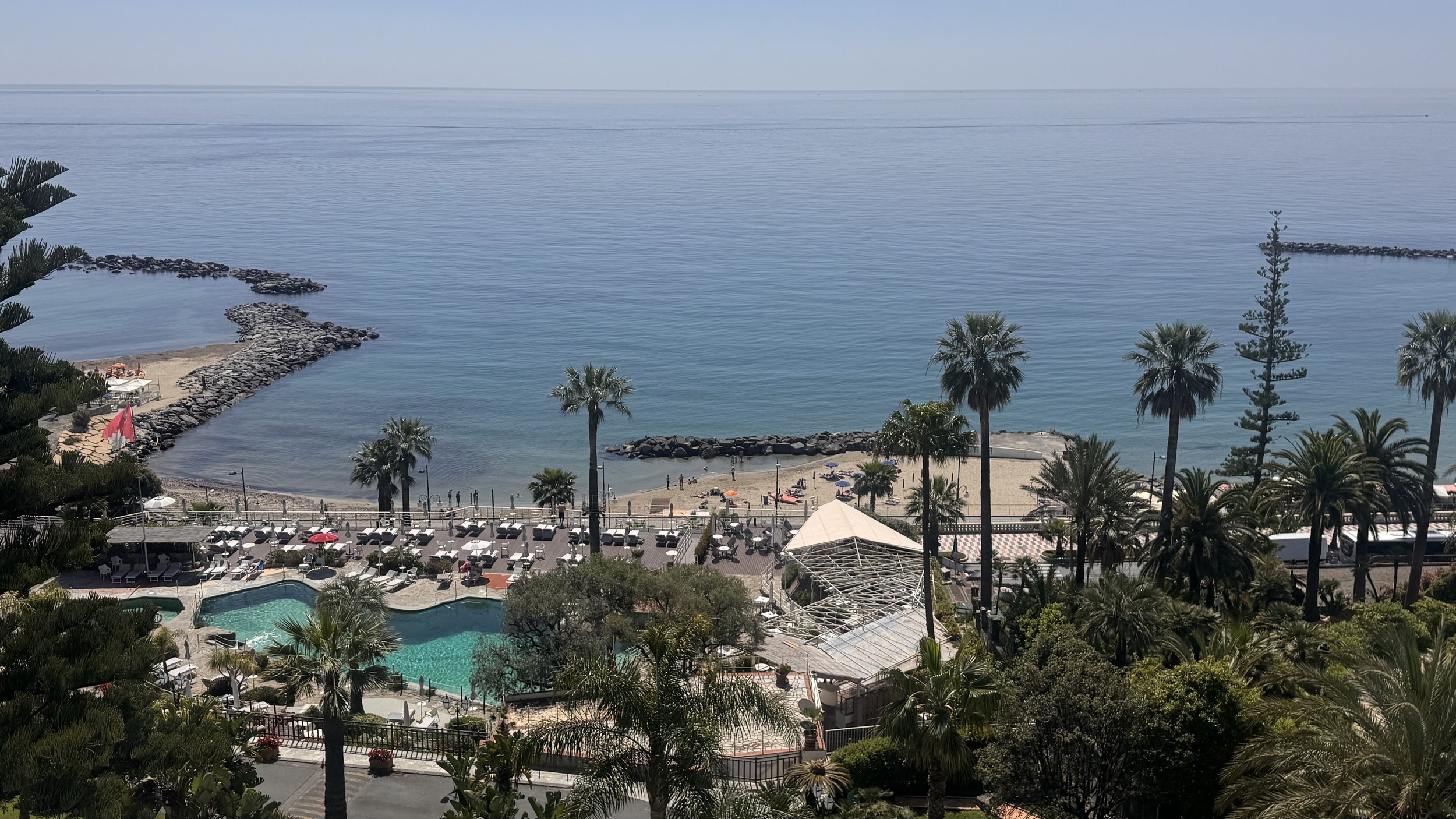Royal Hotel Sanremo: tradition, art and excellence above the blue of the Mediterranean
Set on the Ligurian coast, where the sun lights the Riviera with golden clarity and flowers seem to bloom year round, the Royal Hotel Sanremo stands as one of the most elegant and enduring landmarks in European hospitality.
Founded in 1872 by Mario Bertolini, the hotel was conceived to welcome European aristocracy escaping the harsh northern winters in search of mild climate and quiet refinement. The name “Royal” is not decorative, it is historical. From its earliest days, the property has hosted kings, princes, artists and great intellectuals, solidifying its position as one of the grand dames of continental hospitality.
Still under the care of the Bertolini family, the Royal proudly remains one of the few historic hotels in Europe still owned by its founding lineage. Today, it is part of the prestigious Leading Hotels of the World, a collection known for curating exceptional independent properties, places with soul, heritage and a deep sense of place. What I most admire about Leading Hotels is this commitment: preserving the identity of each hotel while upholding impeccable human centred service.
Upon arrival, we were welcomed with warmth and elegance by Mônica Wild, a Brazilian who has been with the hotel for over sixteen years. Mônica is more than a staff member, she is a living archive of the Royal. She knows every corridor, every Murano chandelier, every corner of the garden, and she shares that knowledge with the generosity of someone who deeply loves where she works.
I stayed in the Aurora Suite, a serene and refined space where time seems to soften. With a grand private terrace facing the sea and a personal jacuzzi, the suite opens itself to nature with effortless grace. The interior design blends Italian tradition and modern comfort, dark wood furnishings, soft tones, noble textiles. Everything is intentional. Everything is in balance. Morning light floods the room delicately, and by dusk, the suite becomes a private theatre of calm.
Surrounding the hotel is a sixteen thousand square meter subtropical park, a landscape of tall palm trees, vibrant Sanremo flowers and even banana and plum trees, which during our stay bore sweet sun kissed fruit. Walking through the gardens is an experience in itself, the scent, the shade, the sea breeze, all forming a quiet symphony of Mediterranean life.
At the heart of the grounds lies the hotel’s iconic saltwater swimming pool, designed in 1948 by the legendary Gio Ponti. Its bold curves, geometric elegance and location between garden and sea create a visual dialogue with the landscape. Heated and pristine, the pool is a place of contemplation as much as leisure. Between the overpowering beauty of the Mediterranean and the magnetic stillness of the pool, I surrendered to its magic. Service poolside was impeccable, drinks arriving before we asked, fresh towels in perfect timing, and a sense of attentive silence that defines true luxury.








Inside, the Royal reveals a visual identity steeped in heritage. Murano glass pieces shimmer in natural light, adorning rooms and corridors with refined artistry. The chandeliers, luminous and masterfully composed, hang above polished marble floors and gilded mirrors. Here, elegance is not ornamental. It is architectural, spatial, lived.
We enjoyed a memorable lunch at the Fiori di Murano restaurant, housed in a glass enclosed space with views over the gardens and the sea. The room is a study in Mediterranean refinement, soft linen, fine porcelain, thoughtful acoustics. The cuisine celebrates Ligurian tradition with subtle innovation. We started with fresh local seafood, followed by a delicately fragrant lemon risotto, infused with regional herbs. Desserts were equally precise, light, creative and beautifully plated.
The wine list is extensive and well balanced, highlighting local producers and prestigious European labels. Service throughout was faultless, attentive, discreet and intuitive. To dine at the Royal is not simply to eat well, but to experience grace at the table.
The hotel’s commitment to the natural world extends beyond aesthetics. In partnership with the Tethys Research Institute, the Royal adopted a sperm whale named “Royal,” resident in the Pelagos Sanctuary, a protected marine area between Italy and France. The lobby hosts images and stories of this majestic creature, reminding guests that true luxury lies in respecting what surrounds us.
The Royal Hotel Sanremo is more than a refined place to stay. It is a living example of how tradition, design, nature, service and authenticity can coexist in perfect harmony. Here, time does not stop, it transforms into memory.


















